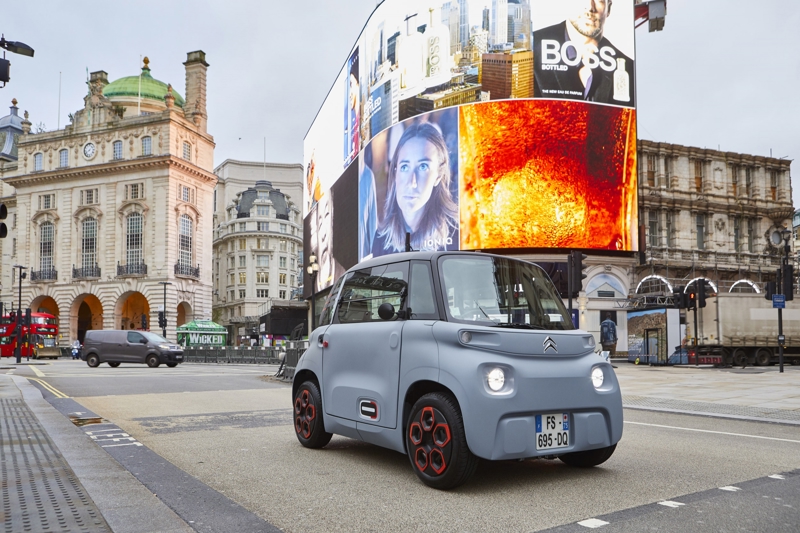
This feature originally appeared in the March 2022 edition of Fleet News. Read the article in the digital issue of the magazine.
As fleets cast their nets ever wider to reduce vehicle emissions through electric vehicles (EVs), one sector appears to continually fly under the radar: the zeroemission powered light vehicle (ZEPLV).
These range from electric mopeds to quadricycles, such as the Citroën Ami and Renault Twizy, and are smaller and lighter than conventional cars or vans.
This means they are more efficient than the larger vehicles, while their smaller size has the potential to significantly reduce congestion (see panel, below).
“Traditionally, PLVs have often been absent from national and local policy development, possibly due to an underappreciation or lack of awareness of their potential benefits,” says Andy Eastlake, CEO of Zemo Partnership.
“There is a great opportunity to decarbonise transport through the use of smaller, lighter vehicles and to multiply the gains we can achieve through electrification.
“Replacing fossil-fuelled combustionpowered vehicles with electric variants is a key step on the journey to net zero and, in time, will remove vehicle tailpipe emissions, but risks leaving the other challenges unchecked if delivered in isolation.
“We believe an approach encouraging the right vehicle for the right journey will help reduce the high number of single occupancy car and lightly laden van journeys we see congesting our roads today.”
Replacing many of these journeys with more affordable ZEPLVs could see an increase in the road space available for other users, a reduction in energy use and an increase in energy efficiency that will place less demand on local charging infrastructure.
Eastlake adds: “We should embrace PLVs as a key part of the spectrum of road transport solutions, which, of course, range from active, shared and public transport, through to cars, vans and heavy goods vehicles (HGVs).”
Their potential has not gone entirely unnoticed, however. In its Decarbonising Transport plan released last summer, the Government described the opportunity for ZEPLVs as “enormous” and committed to delivering an action plan aimed at encouraging the adoption of the technology.
This has since been compiled by MCIA (Motorcycle Industry Association) and Zemo Partnership, and was published last month.
Efficiency gains
ZEPLVs need smaller batteries than conventional battery electric vehicles (BEVs) as they are lighter and less powerful.
From a charging perspective, this translates into a shorter time to recharge to maximum range from a domestic three-pin plug.
A four-to-five hour period to achieve a 100% fully charged state is typical even for larger and more powerful ZEPLVs, whereas a small BEV can require more than 12 hours under the same conditions.
MCIA says removeable battery packs are also increasingly common in ZEPLVs, particularly for the smaller, two-wheeled vehicles.
This enables batteries to be swapped rapidly to extend journey times and allows for a battery to be charged away from the vehicle, often enabling users with no on-street charging to operate zero emission vehicles.
“ZEPLVs, in general, require a far less onerous charging infrastructure to be installed and, in many cases, can be accommodated within the existing power network of a building or location,” says Tony Campbell, CEO of MCIA.
“However, while this is a clear and obvious advantage, it is important ZEPLVs are included in the development of the EV charging infrastructure within the UK.
“Compatibility with the high-power charging network, the provision of dedicated and secure charging bays and the creation of off-vehicle charging facilities are some areas for consideration.”
Some fleets have already recognised the potential of ZEPLVs and are starting to incorporate them.
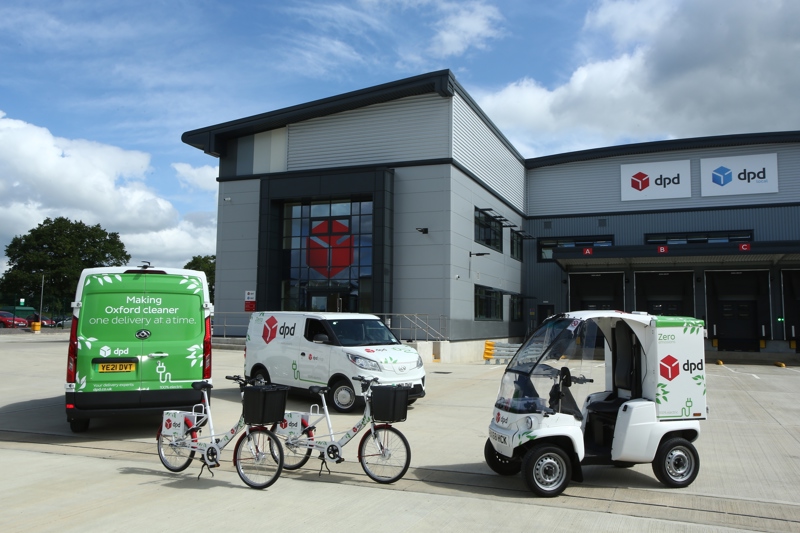
For example, delivery company DPD began using them in 2018 at its first all-electric depot in London’s Westminster and has expanded this to other sites.
One of these is Oxford which last year become the organisation’s first all-electric city, with all parcel deliveries there made only by EVs, including vans, quadricycles and e-bikes.
Royal Mail is also trialling 12 ZEPLVs across five towns and cities.
Its six-month project sees it operate a mix of Paxster Cargo and Ligier Pulse 4 vehicles as part of a drive to reduce emissions.
Roughly the size of a golf buggy or quad bike, its ZEPLVs will be assessed in residential areas as a potential lower carbon alternative to larger vans, which are typically shared by two employees.
The trial will assess whether giving these employees access to separate vehicles could provide greater flexibility on busy routes in a more environmentally-friendly way.
The vehicles are being used in Edinburgh, Crewe, Liverpool, Swindon and London, and their load size of between 1.2cu m and 2cu m is enough to accommodate more than an average daily round’s worth of letters and small parcels.
They are charged using a standard three-pin plug and have ranges of 88 miles and 74 miles respectively.
Strong demand
A further sign that ZEPLVs – which are classified as L-category vehicles by the Government for type approval and legislative purposes – are gathering momentum has been the public’s response to the Citroën Ami quadricycle.
Announced last year, the vehicle has room for two passengers and one small item of luggage. Its 5.5kWh battery provides a range of 46 miles and a top speed of 28mph.
When it was launched, the Ami was not confirmed for the UK with Citroën instead hosting a ‘register your interest’ form on its website to gauge public interest in the vehicle.In the following six months, more than 12,000 potential customers had completed the form, persuading the manufacturer to officially introduce the Ami in the UK, with the first vehicles arriving this spring.
It remains left-hand drive only, while a singleseater Cargo commercial version will also be capacity of 400 litres and a payload of up to 140kg.
The PLV action plan by Zemo Partnership and MCIA also identifies electric motorbikes and mopeds as having important roles to play in a future transport landscape.
Some types of fleets, such as breakdown recovery and bluelight organisations, already use motorbikes as integral parts of their operations, with electric motorbikes an obvious next step.
West Midlands Police has already trialled electric motorbikes while it was supporting security operations during the COP26 Summit in Glasgow last year.
“Within our fleet we already use electric bicycles and were the first force to introduce electric cars to our fleet,” says Inspector Sam Lewis, from West Midlands Police.
“Electric motorbikes are something else we are actively looking at for the future.”

Richard Jordan, CEO at Super Soco UK and UK CEO at GreenMo UK, has also been a vocal advocate of the important part they could play in the future; perhaps not surprisingly for a senior executive at an electric motorbike manufacturer.
“We are all aware of the need for a mindset change to avoid cars for short journeys and commuting,” he says.
“With an expanding population, there will be less room and manoeuvrability for everyone to be able to own a car. This issue has left a missing piece in the urban transportation jigsaw.
“The popularity of rented electric scooters in cities shows the demand for personal transport that is green, cost-effective and safe.
“Forward-thinking electric motorbikes, both personal and shared, are a crucial addition to the micro-mobility solution.
“The UK must turn away from its tunnel vision and embrace electric motorbikes as a natural alternative to the busy underground, unaffordable Ubers and problematic e-scooters.”
Soaring sales
As with electric cars and vans, the sale of electric motorbikes has soared in the past couple of years.
MCIA figures show they increased 146% in 2021 (registrations: 6,028) compared with 2020.
However, despite the Government saying in its Decarbonising Transport plan “we will build on our existing support in this segment, such as with the plug-in motorcycle grant, to benefit urban logistics”, the incentive was recently subject to cuts similar to those that have hit the plug-in car grant.
Under the old rules, all new road-registered electric motorbikes would receive a grant of £1,500 or 20%, whichever was the smallest.
The change saw all motorcycles priced more than £10,000 excluded from the incentive, with battery motorbikes priced up to £10,000 receiving a grant of up to 35% of the value, up to a maximum of £500. Mopeds qualify for 35% up to £150.
“The 90% reduction in support will likely have a significant impact on the desire to switch to fullyelectric,zero-emission vehicles,” says Neil Richardson, head of sales north and motorcycle division at Close Brothers Motor Finance.
“But, if the Government is going to continue with its ban on new petrol motorcycles being sold in the UK from 2035, more will need to be done to encourage riders to move away from diesel and petrol.”
The reduction in the plug-in motorcycle grant is a blow to the MCIA and Zemo action plan, which highlighted the importance of financial incentives to accelerate uptake of the technology.
“It is with great disappointment the Government has decided to drastically cut the level of support for moped and motorbikes, typically emitting zero or low emissions,” says Campbell.
“The announcement comes as a hammer blow to consumers and businesses up and down the country who were – and are – fully behind the drive to zero-emission vehicles and a net zero future.”
Further obstacles
The action plan says other obstacles to the wider uptake of ZEPLVs include a lack of awareness of the technology and the limited availability of suitable vehicles.
Zemo and MCIA say the Government will need to lead a public awareness campaign to gain greater acceptance for the vehicles, as well as encouraging their use through initiatives such as the Local Authority Transport Decarbonisation Toolkit.
“Key to this will also be encouraging employers to highlight the availability of these vehicles to their employees, improving commuting congestion and air quality in urban and suburban environments,” adds the action plan.
“The advantage to businesses will be clear with much more efficient travel times achieved than by those workers who remain in cars or vans, vehicles which are, arguably, not appropriate for the journey.”
The plan also calls for Government to review the existing PLV vehicle regulations to ensure they remain fit for purpose and cater for the evolution of future ZEPLVs.
It also wants the Government to work to develop the component and system supply chain in the UK for zero emission two-wheelers to encourage new entrants to the market and lower manufacturing costs, as well as develop the manufacturing base and supply base for electric quadricycles.
This should “increase the number and availability of models on the market, providing a greater degree of consumer and fleet choice”, says the report.
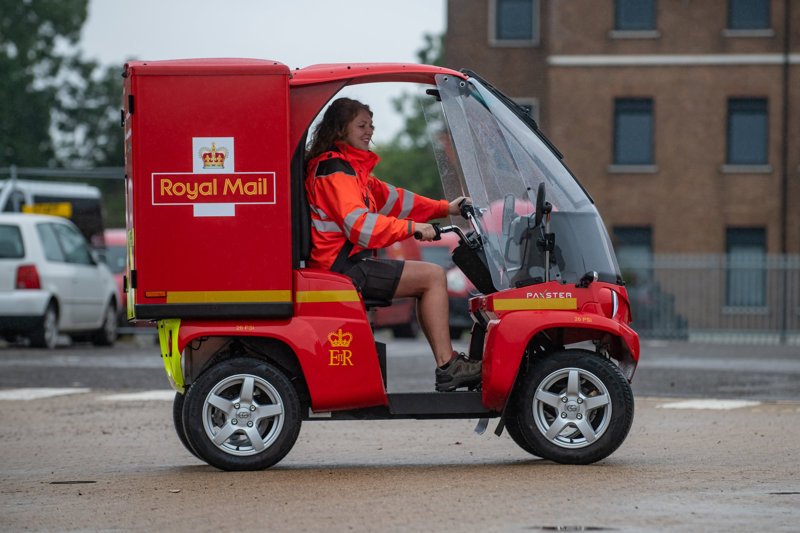
Journey times drop and space on roads increases
A modal shift from private cars to powered light vehicles (PLVs) would significantly reduce congestion, a study by Local Transport Project has found.
The organisation carried out a research project for Slough, Berkshire, and its findings showed that adoption of the vehicles would bring significant benefits in all scenarios considered.
The analysis found replacing 5% of private cars with PLVs would reduce average journey times by 6.7%, increasing to 12% when a 10% modal shift was simulated.
Local Transport Project also looked at the impact of switching light goods vehicles (LGVs) to powered light vehicles.
It found that when 20% of LGVs were replaced with a mix of PLVs, average journey times fell 4.3%. If this proportion were increased to 50%, delays decreased 9.4%.
“There is much discussion about electric and autonomous vehicles, but it should be considered that simply replacing a combustion-engined vehicle with a comparable electric or autonomous equivalent will not alleviate the increasing congestion issue,” adds the report.
The congestion impact study also examined the amount of space that could be freed up on the road if cars were replaced by PLVs.
As an example of size, the Citroën Ami measures 2.41m long and 1.39m wide to give a footprint of 3.35sq m. A typical car has a footprint around 7.2sq m.
Using baseline data, a 5% modal shift to PLVs reduced a 276-metre queue by 25 metres, while a 10% shift would provide another 48 metres of space.




















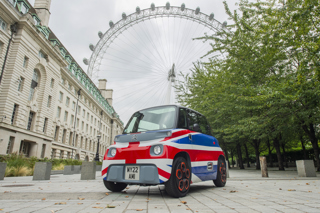
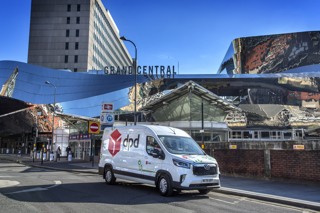
Login to comment
Comments
No comments have been made yet.